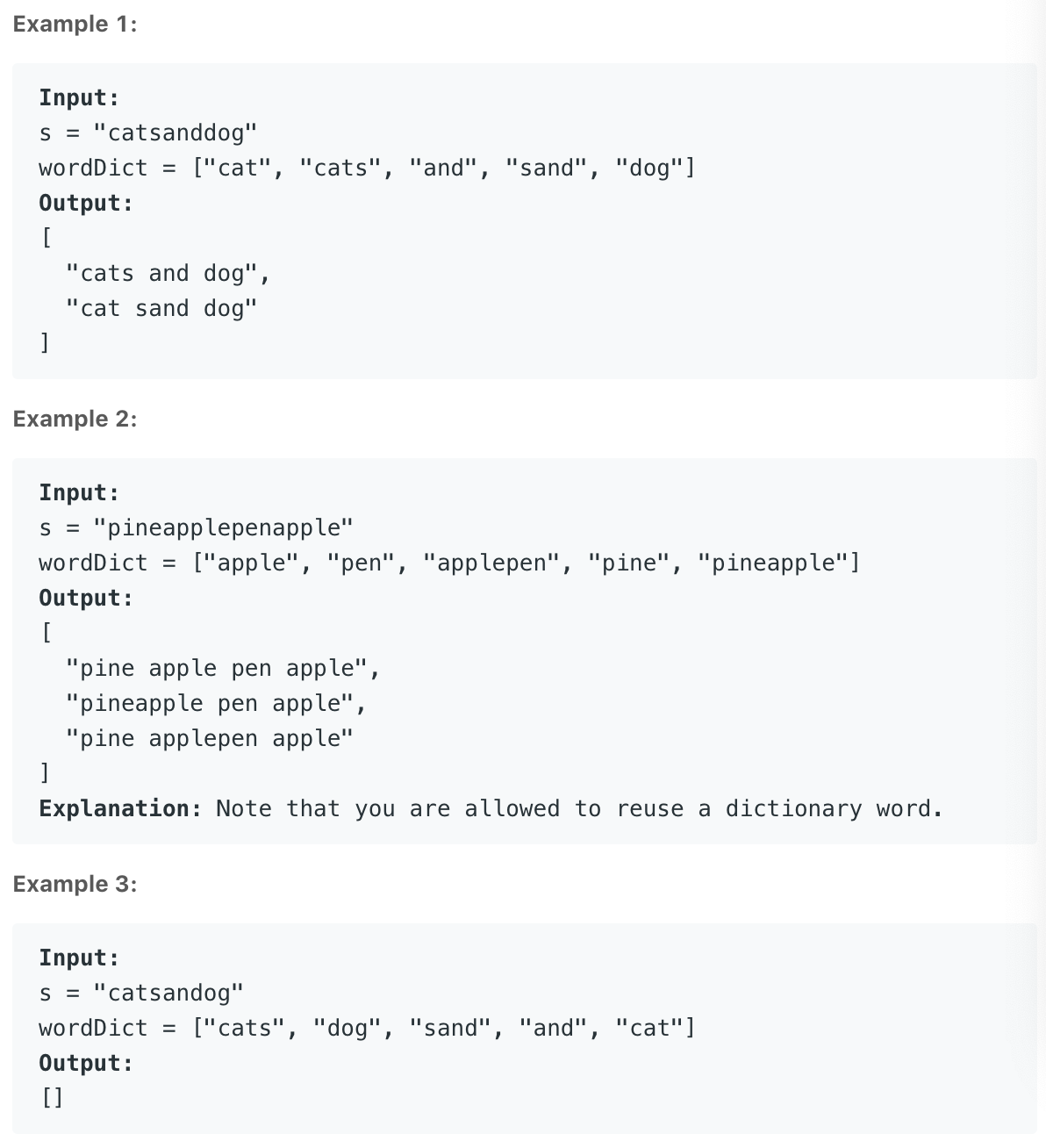Word Break II
Given a non-empty string s and a dictionary wordDict containing a list of non-empty words, add spaces in s to construct a sentence where each word is a valid dictionary word. Return all such possible sentences.
(字符串有效分词)
Note:
- The same word in the dictionary may be reused multiple times in the segmentation.
- You may assume the dictionary does not contain duplicate words.
Example:

1. 动态规划 + 回溯法
下面这种解法只使用了回溯,最终会导致 Time Limit Exceeded。
1 | # Time Limit Exceeded |
因此需要结合动态规划首先进行判断再回溯,最终具体解法如下:1
2
3
4
5
6
7
8
9
10
11
12
13
14
15
16
17
18
19
20
21
22
23
24
25
26
27
28
29
30
31
32
33class Solution:
def wordBreak_check(self, s):
if s in self.wordDict:
return True
dp = [False for _ in range(len(s) +1)]
dp[0] = [True]
for i in range(1, len(s)+1):
for j in range(i):
if s[j:i] in self.wordDict and dp[j]:
dp[i] = True
return dp[-1]
def backtracking(self, s, res, start):
if s[start:] in self.wordDict:
self.results.append(" ".join(res + [s[start:]]))
for i in range(start+1, len(s)):
if s[start:i] in self.wordDict:
self.backtracking(s, res+[s[start:i]], i)
def wordBreak(self, s: str, wordDict: List[str]) -> List[str]:
self.wordDict = wordDict
if not s or not self.wordBreak_check(s):
return []
self.results = []
self.backtracking(s, [], 0)
return self.results
1. 哈希表 + 回溯法
这里维护了一个哈希表保存之前对字符串已经处理过的映射关系,例如memo[‘sanddog’] = ‘sand dog’这样就避免了重复多次计算。不会Time Limit Exceeded,具体实现方法如下:
1 | class Solution: |